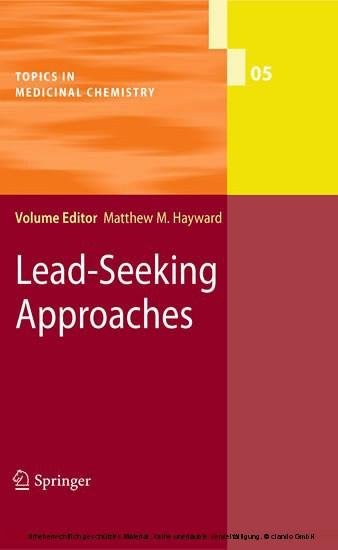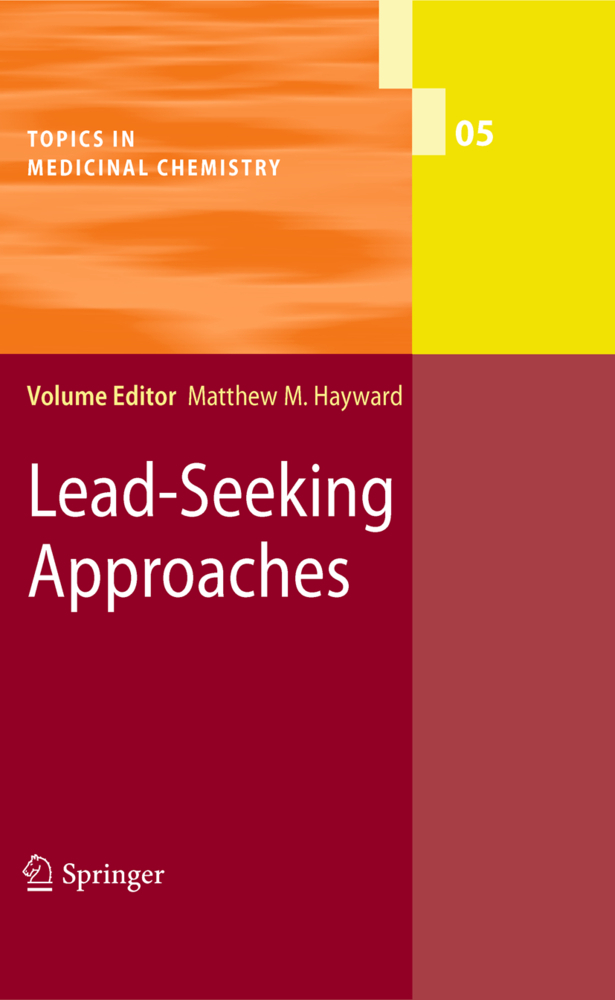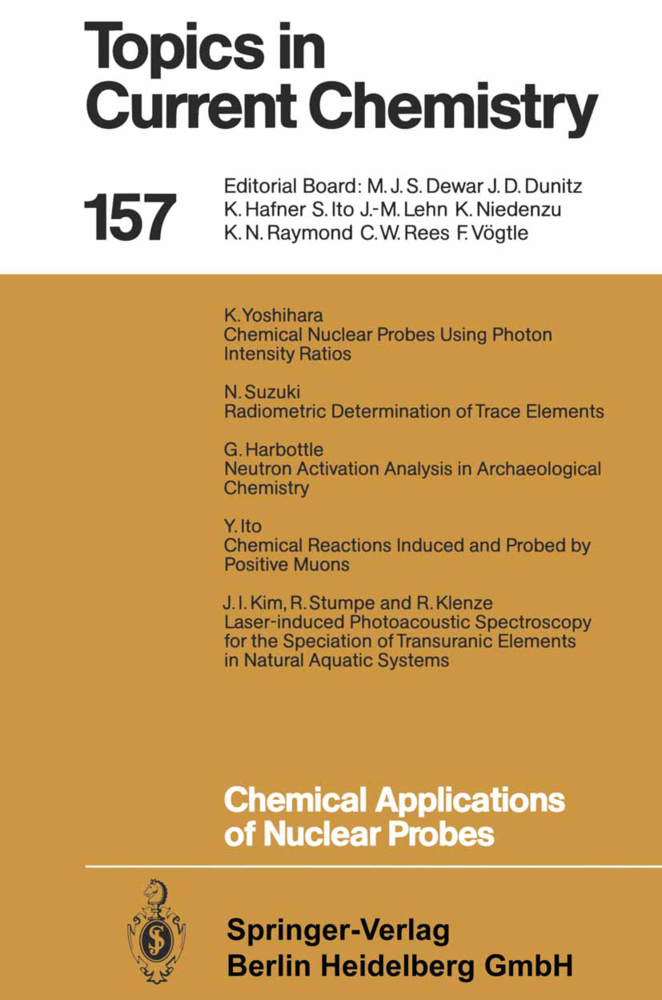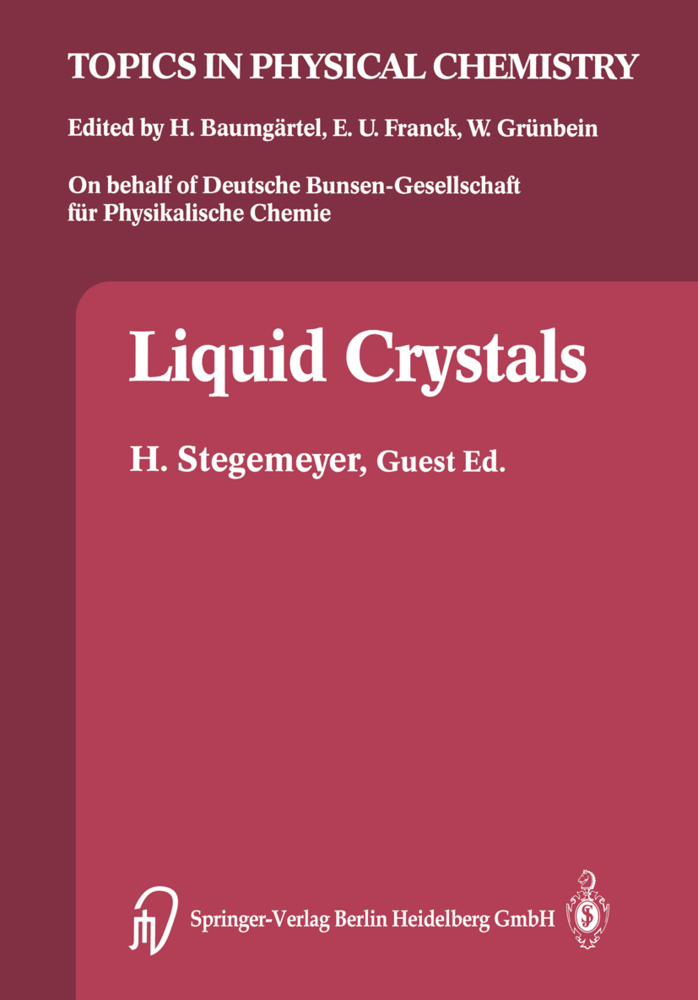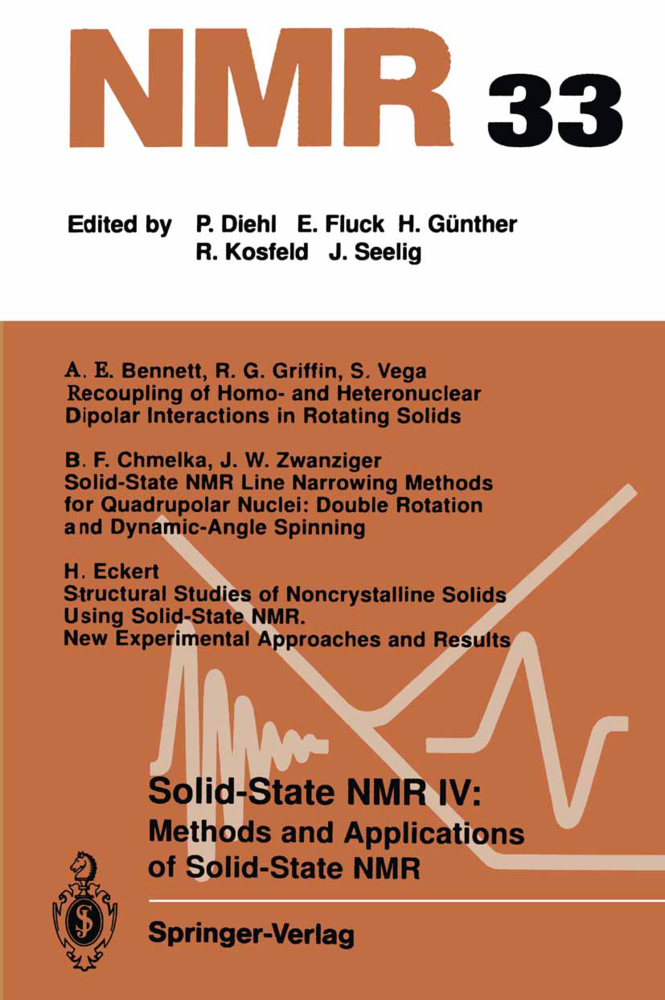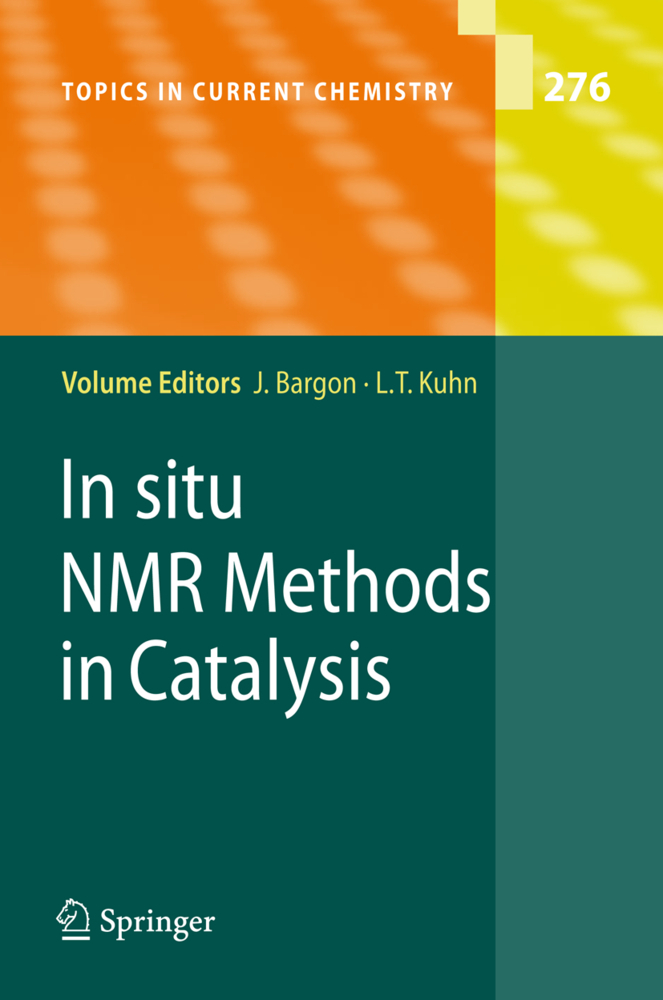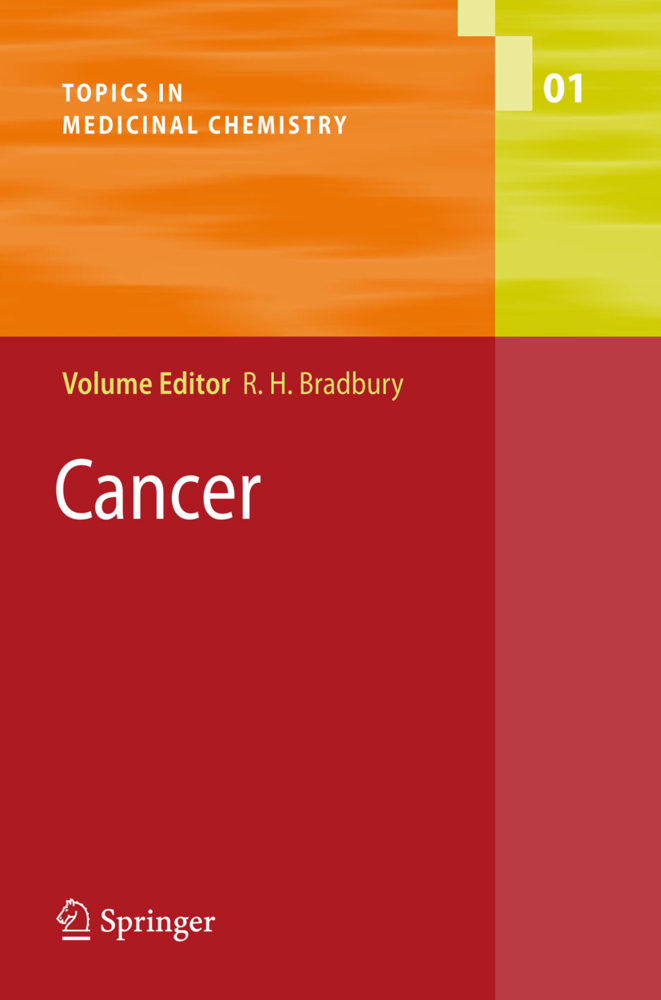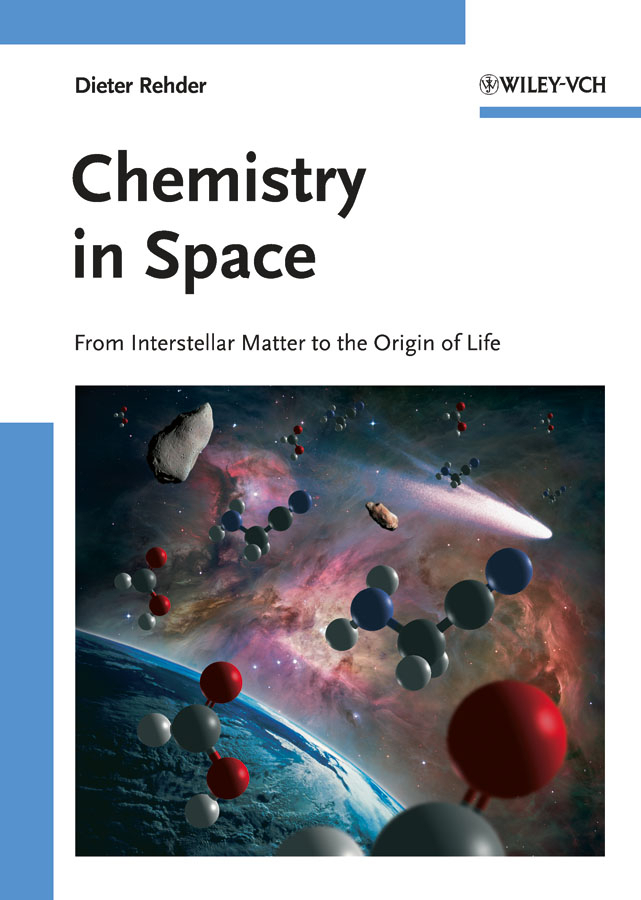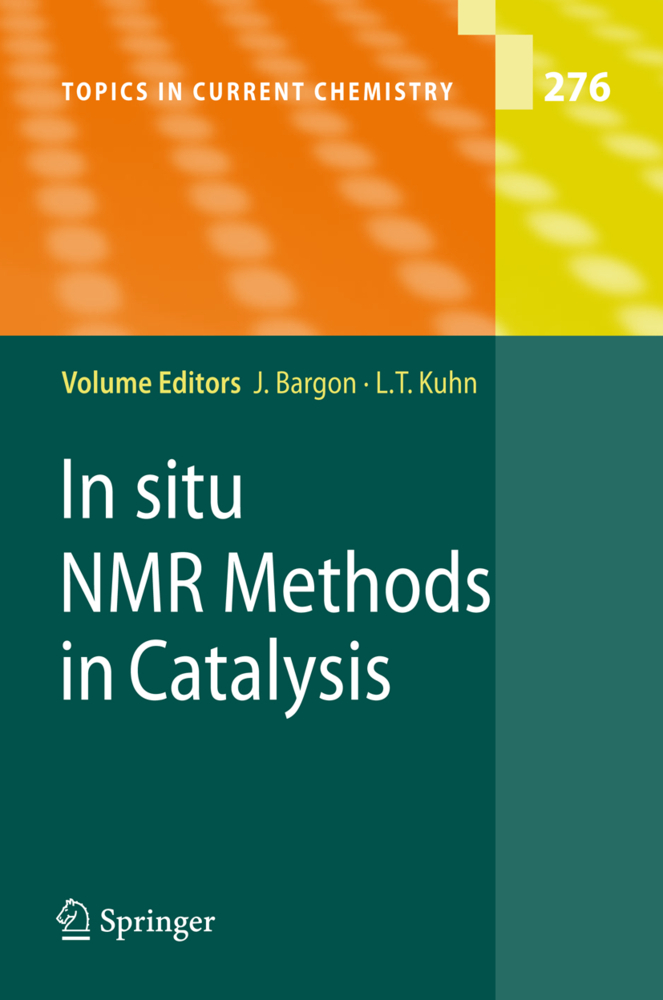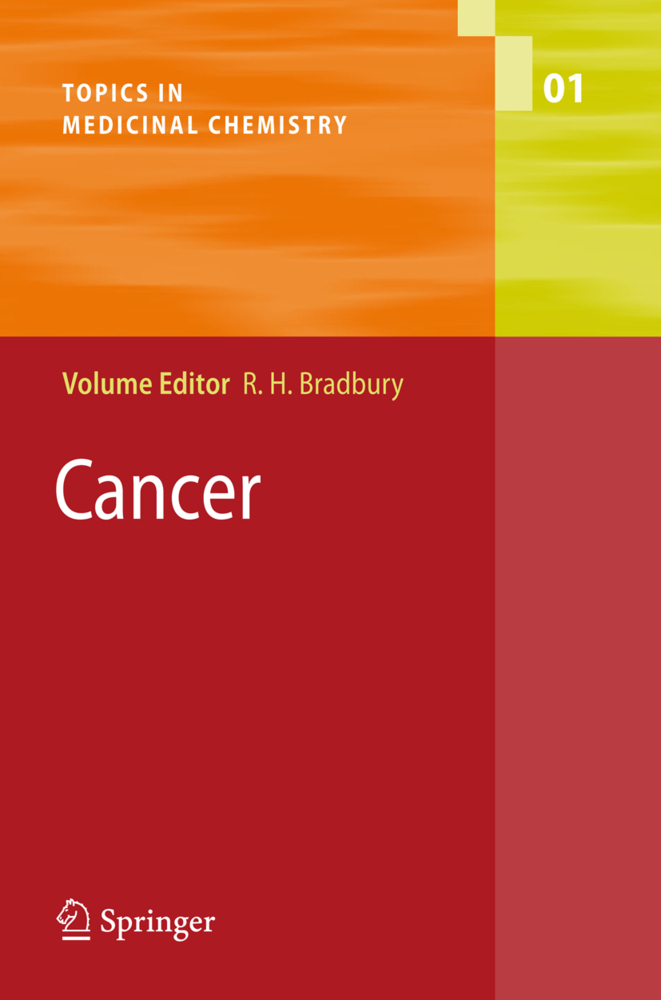Christopher A. Lipinski: Overview of Hit to Lead: The Medicinal Chemist s Role from HTS Retest to Lead Optimization Hand Off
1;Volume Editors;5 2;Editorial Board;5 3;Topics in Medicinal Chemistry Also Availabe Electronically;6 4;Preface to the Series;7 5;Preface to Volume 5;8 6;Contents;9 7;Overview of Hit to Lead: The Medicinal Chemist's Role from HTS Retest to Lead Optimization Hand Off;10 7.1;1 Introduction: What is a Medicinal Chemist?;12 7.1.1;1.1 The Medicinal Chemist's Role;13 7.2;2 Drug Discovery, Druggability and Developability;14 7.2.1;2.1 High Throughput Screening;15 7.2.2;2.2 Phenotypic Screening;15 7.2.3;2.3 Fragment Screening;17 7.2.4;2.4 Structure-Based Drug Design;18 7.2.5;2.5 Homology Modeling;18 7.2.6;2.6 Chemoinformatics;19 7.3;3 High-Order Pattern Recognition;19 7.3.1;3.1 HTS and the Defined Mechanism Screen;20 7.3.2;3.2 HTS, Library Design and the Medicinal Chemist;20 7.3.3;3.3 HTS True Positive Hit Rates;21 7.3.4;3.4 False Positives in HTS;21 7.3.5;3.5 Stochastic False Positives: Mostly in Biology;22 7.3.6;3.6 Nonstochastic False Positives: Mostly in Chemistry;22 7.3.7;3.7 False Negatives;23 7.4;4 Screening: What is the Goal?;24 7.4.1;4.1 Chemical Biology/Chemical Genetics Screening;24 7.4.2;4.2 Drug Discovery Screening;25 7.4.3;4.3 Compound Quality Filters Aka Functional Groups to Avoid;26 7.4.4;4.4 Structure Verification on the Original Sample;27 7.4.5;4.5 Activity Verification in a Resynthesized Sample;27 7.4.6;4.6 Hit to Lead also Known as Closed Loop;28 7.4.7;4.7 Multiple vs Single Chemical Series in ``Hit to Lead´´;29 7.4.8;4.8 Profiling is Critical in ``Hit to Lead´´;29 7.4.9;4.9 How Many Problems Can Be Handled in Chemistry?;30 7.4.10;4.10 Preformulation: Pharmaceutical Sciences in Early Discovery;30 7.4.11;4.11 Activity SAR Patterns;31 7.5;5 Hit to Lead, Exit Criteria to Lead Optimization;31 7.6;6 Conclusion;32 7.7;References;33 8;High Throughput Screening in the Twenty-First Century;34 8.1;1 Introduction;35 8.2;2 Useful Definitions;36 8.3;3 Conducting an HTS;36 8.3.1;3.1 Automation;36 8.3.1.1;3.1.1 Structural Organization;37 8.3.1.2;3.1.2 Platforms;38 8.3.1.3;3.1.3 Art of the Possible;39 8.3.2;3.2 HTS Process;40 8.3.2.1;3.2.1 Phases of HTS;40 8.3.2.1.1;3.2.1.1 Transfer of an Assay from Therapeutically Focused Area to HTS;41 8.3.2.1.2;3.2.1.2 HTS Assay Development and Validation;42 8.3.2.1.3;3.2.1.3 Robotic Assay Adaptation and Validation;43 8.3.2.1.4;3.2.1.4 HTS Campaign;44 8.3.2.1.5;3.2.1.5 Hit Confirmation;44 8.3.2.1.6;3.2.1.6 Logistics;45 8.3.3;3.3 Assay Development;46 8.3.3.1;3.3.1 Assay Formats;47 8.3.3.1.1;3.3.1.1 Fluorescence Polarization;47 8.3.3.1.2;3.3.1.2 Homogeneous Time Resolved Fluorescence;48 8.3.3.1.3;3.3.1.3 Bead-Based Assays;48 8.3.3.1.4;3.3.1.4 Scintillation Proximity Assays;50 8.3.3.2;3.3.2 Assay Formats by Target Class;50 8.3.3.2.1;3.3.2.1 Kinases;50 8.3.3.2.2;3.3.2.2 Proteases;51 8.3.3.2.3;3.3.2.3 Nuclear Receptors;52 8.3.3.2.4;3.3.2.4 G Protein Coupled Receptors;53 8.3.3.2.5;3.3.2.5 Ion Channels;56 8.3.3.2.6;3.3.2.6 Protein-Protein Interactions;57 8.3.3.2.7;3.3.2.7 Phenotypic Assays;57 8.3.4;3.4 Screening Sample Management;58 8.3.4.1;3.4.1 Solvent;58 8.3.4.2;3.4.2 Storage Conditions;59 8.3.4.3;3.4.3 Plate Format;60 8.3.4.4;3.4.4 Logistic Strategy;61 8.3.4.5;3.4.5 Automation Systems;62 8.4;4 Deliverables;63 8.4.1;4.1 Output;63 8.4.2;4.2 Statistics;64 8.4.2.1;4.2.1 The Zhang Factor;64 8.4.2.2;4.2.2 Statistics and Hit Identification;66 8.4.2.3;4.2.3 Hit Selection by Other Means;67 8.5;5 Has HTS Been Successful?;68 8.5.1;5.1 A Pessimistic View;68 8.5.2;5.2 An Optimistic View;69 8.6;6 Impact, Challenges, and Future Directions;70 8.6.1;6.1 Data Management;70 8.6.1.1;6.1.1 User Requirements;71 8.6.1.2;6.1.2 Data Management Options;72 8.6.2;6.2 Staff Development;73 8.6.3;6.3 New Technologies;75 8.6.3.1;6.3.1 Miniaturization and Fluidics;75 8.6.3.2;6.3.2 Label-Free Screening;76 8.6.3.3;6.3.3 High Content Screening and Short Interfering RNA;77 8.6.3.4;6.3.4 Primary Cells;78 8.6.4;6.4 Smarter Approaches to Screening;78 8.6.4.1;6.4.1 Focused Libraries;78 8.6.4.2;6.4.2 Fragment Based Screening;79 8.6.4.3;6.4
Hayward, Matthew M.
| ISBN | 9783642010750 |
|---|---|
| Artikelnummer | 9783642010750 |
| Medientyp | E-Book - PDF |
| Auflage | 2. Aufl. |
| Copyrightjahr | 2010 |
| Verlag | Springer-Verlag |
| Umfang | 217 Seiten |
| Sprache | Englisch |
| Kopierschutz | Digitales Wasserzeichen |

